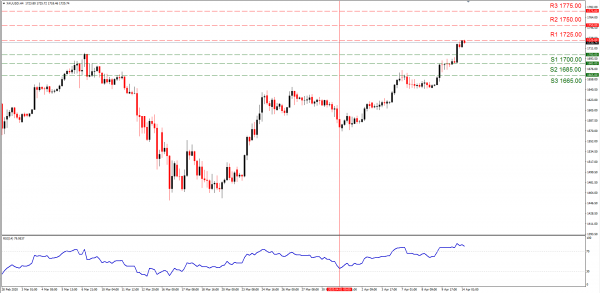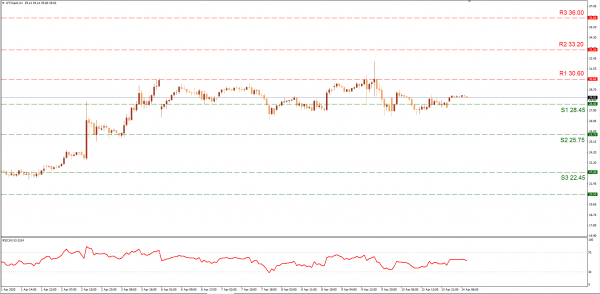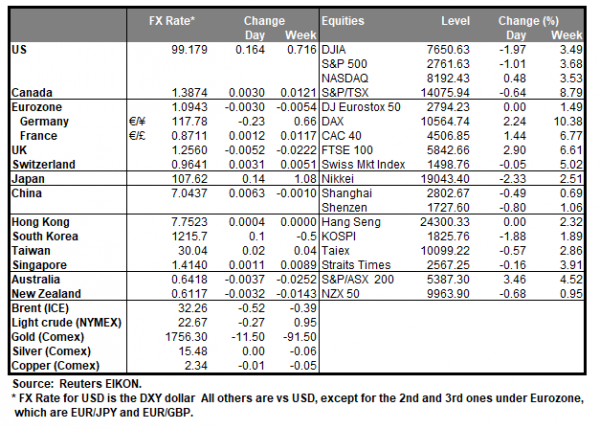During the previous weekend the OPEC plus group had concluded on a massive production cut program to help stabilize the Oil market. The official written report by OPEC states that from May to June 2020, 9.7M barrels per day will be cut and the agreement extends even further from July to December with cuts reaching 7.7M barrels per day. In the latest meeting, Russia and the Saudi kingdom confirmed they are both obliged to each other to continue to meet in the future and that they will continue to work together on predefined goals and targets, they had set back in the summer of 2019. However, Oil demand could drop even further in the second quarter of the current year which is seemingly keeping Oil prices lower at the moment. Furthermore, the global oil market will have the largest spare capacity in at least a decade which also puts negative pressure on Oil prices. WTI traded just below $30 per barrel yesterday. We expect the effect of the production cuts on Oil prices to make its presence gradually in the next months when economic activity around the world starts picking up. The global economy’s performance in the following months will determine Oil demand and price>.
Gold rockets to 7 year high over economic uncertainty
Worries over the performance of the global economy currently and for the next weeks due to the coronavirus outbreak effect, have sent the precious metal above the $1700 price for the first time since February 2013. So far, the economic impact of the virus has led to economic uncertainty around the world. In the US, the unemployment rate is steadily increasing on a weekly basis. However, FED chairman J.Powel confirmed unemployment will be rising temporarily. On the other hand, some economic measures taken from the FED in the past week are seemingly increasing the supply of the USD which has the effect of reducing its value. A low greenback value usually sends Gold’s price higher. Also, some actions Europe is also facing economic deterioration with many countries of the block suffering from lack of activity, while being on lockdown. Gold has been steadily rising in the last two to three weeks as its safe-haven ability is attracting buyers, with the global economy possibly facing a recession.
AUD moves higher on upbeat Chinese data
AUDUSD moved higher during the Asian session today after financial releases from China displayed an improved trade balance figure. The currency was also boosted by the Export and Import yearly figures that also showed improvement, even though remained in the negatives. During the Asian session Australian financial indicators like Business Confidence were also released, yet the data might had been ignored as the figures moved more into the negatives. AUD’s sensitivity to Chinese data is very evident and we may continue to see it reacting to improved data from the Mainland.
Other economic highlights today and early tomorrow
Today we have a light calendar once again with Czech Republic’s Inflation data for March and current account balance for February due out in the European session. In the US session we get the API weekly reading. We also have three speakers from the US consisting of St. Louis Fed President Bullard, Chicago Fed President Evans, and Atlanta Fed President Bostic. In tomorrow’s Asia session we get the Consumer Confidence reading for April.
Support: 1700 (S1), 1685 (S2), 1665 (S3)
Resistance: 1725 (R1), 1750 (R2), 1775 (R3)
Support: 28.45 (S1), 25.75 (S2), 22.45 (S3)
Resistance: 30.60 (R1), 33.20 (R2), 36.00 (R3)
















